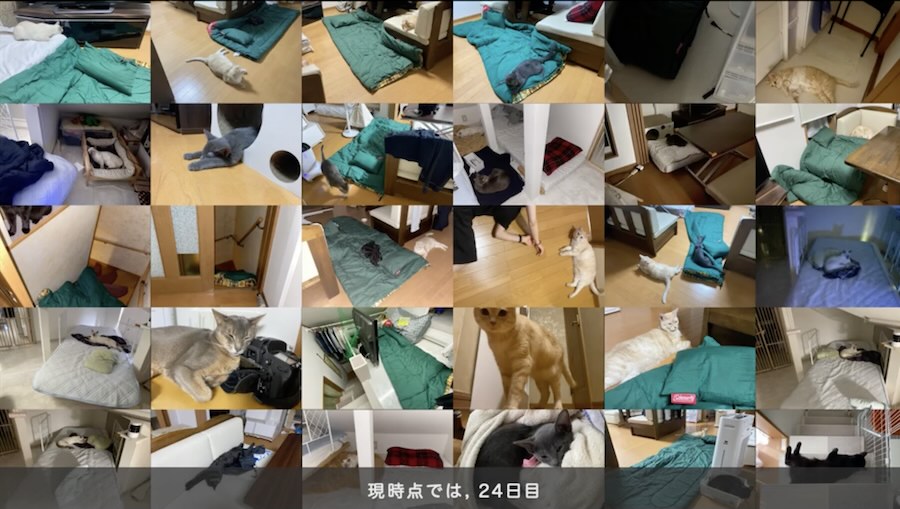
the researcher spent 24 nights sleeping in the location their pet cats chose
Due to physical and societal constraints, the typical sleep patterns of humans are largely fixated. For cats, however, there is a certain randomness to their sleep–sometimes under the bed, other times in the hallway–that is simply impractical for humans. But what if we as humans replicated the sleep habits of cats? What effect would that have on the quality of our sleep? That was the starting point of an intriguing dissertation, published recently by Yuri Nakahashi, a students of Japan’s Hosei University.
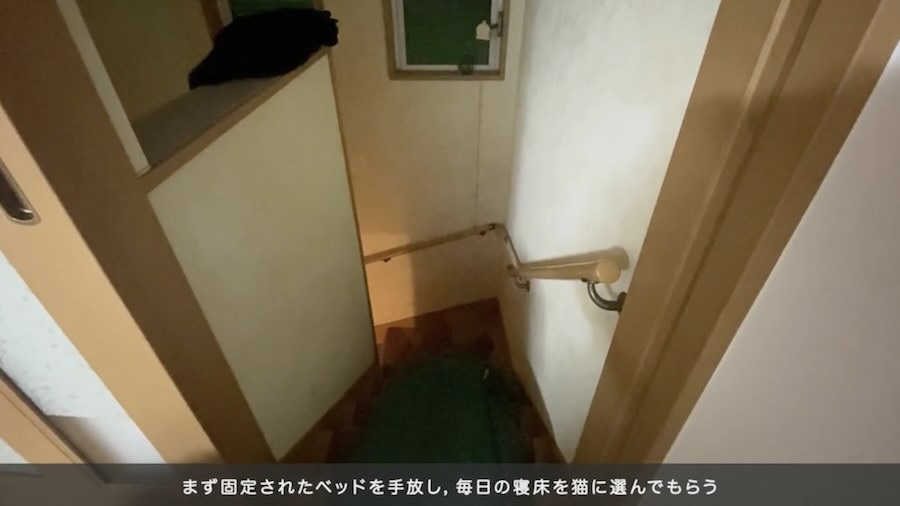
the study began by breaking free of the physical constraints of a bed and letting the cat choose the location of sleep
Cats will sleep in a variety of different locations, each likely the combination of factors such as mood, warmth, light and coziness. If humans were to imitate these patterns, what effect would that have on their quality of sleep? Researcher Yuri Nakahashi attempted to measure and quantify the physical and mental effects this would have on humans by monitoring her 5 cats and allowing each to choose her location of slumber.
Once the cat had appeared to curl up for evening, Nakahashi would lay down a sleeping bag in the same spot, a determination that sometimes resulted in sleeping under a bed or along the stairs. The experiment was conducted for 24 consecutive nights.
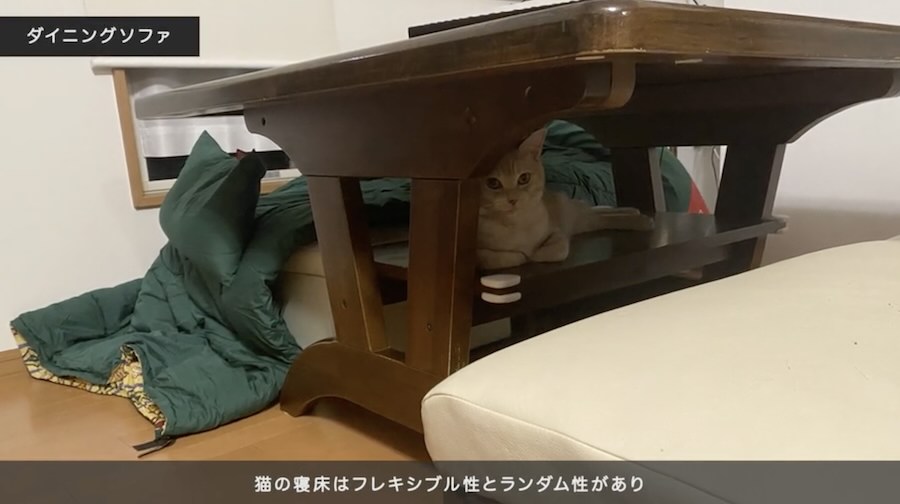
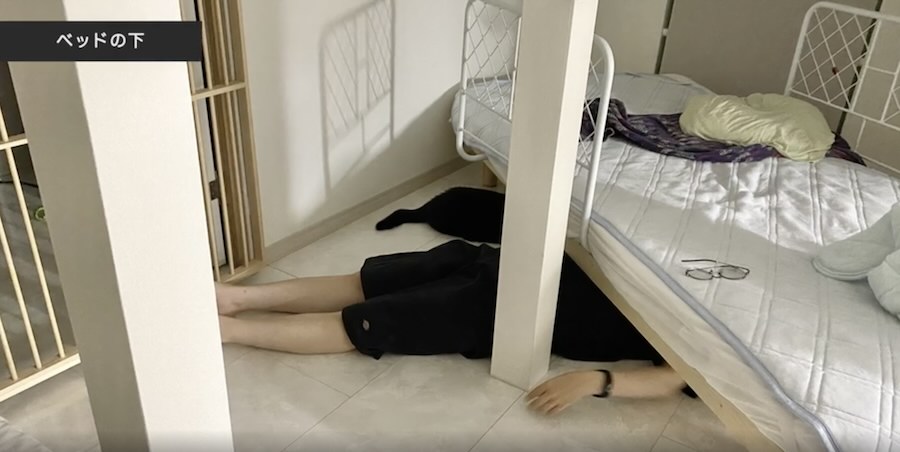
The researcher wore a Fitbit while sleeping, which measured hours and quality of sleep, as well as the number of times she woke up. The quantitative score, graphed below, was then complimented with a qualitative assessment of how the researcher felt physically and mentally compared to sleeping in a normal bed. Any behavioral differences of the cat were also noted and recorded.
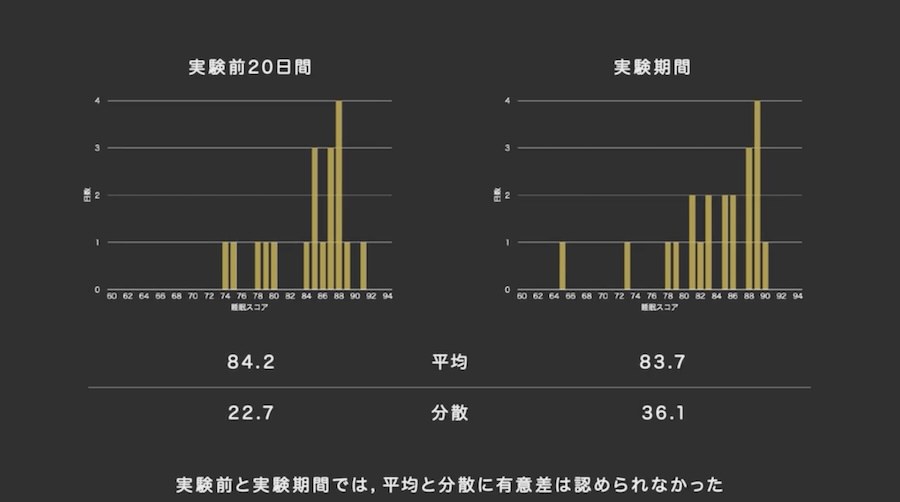
left: sleep score 20 days prior to experiment | right: sleep score during experiment (average and dispersion noted below)
So, what was the researcher’s findings? In her dissertation analysis, Nakahashi explained that the quantifiable data shows no significant difference. The average sleep score 20 days prior to the experiment was 84.2 with a dispersion of 22.7. During the experiment the average sleep score was 83.7 with a dispersion of 36.1.
However, the qualitative results showed several interesting psychological effects. For example, the researcher’s journal often described feelings of excitement and adventure in not knowing where she would be sleeping that night. Notably, there were also many new discoveries as the researcher was given the opportunity to reexamine her own dwelling from a completely different perspective. In addition, the researcher noted that despite being briefly awoken several times due to various movements of the cat, this did not show up in the figures, which can likely be attributed to a natural calming sensation both before bed but also during sleep.
There were even notable differences in the behavior of the cat such as an increase in affectionate behavior, as well as the cat displaying an increased interest in the sleeping bag that the human had been using. And so the researcher concluded that by sleeping in the location that our pet cats choose, we would not be sacrificing any quality of sleep. And that there were often unexpected benefits such as a deepening bond between the pet, as well as an opportunity to rethink our relationship with our own spaces we occupy.
























March 9, 2022 at 7:38 pm
Hahaha! Very amusing. Wondered how her parents feel about funding her education??!! Oh, wait. Maybe I’m just jealous….
March 19, 2022 at 10:42 pm
Japanese universities cost around US$6000 per year, so she might be paying it herself.
March 20, 2022 at 4:00 pm
Hmm… what would one do, though, if one’s cats choose to sleep exclusively in one’s bed, as mine do?